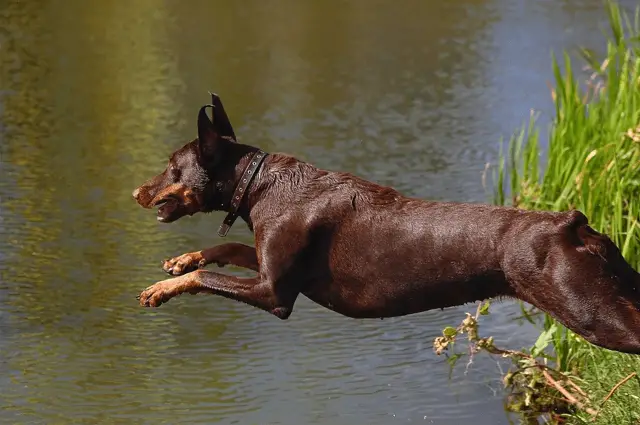Tail Docking - Why It Is Still Done Today?
09.01.2021.
Tail docking is a term that describes removing or partially removing a dog's tail. Some might say that this is an outdated and inhumane procedure that gives no benefit to dogs, yet it is still popular in many countries.
There are different views and opinions regarding this topic, and both sides have some strong arguments and impressive ambassadors. Those that are for tail docking are led by one of the most prominent cynology institutions globally.
Those opposed are lead by different animal welfare organizations, and the most famous are PETA, RSPCA (Royal Society for the Prevention of Cruelty to Animals), and AVMA (American Veterinary Medical Association).
The main issue they are debating on is whether this procedure is humane and painful. Here is what you should know about both sides of the case.
Pro tail docking
Those that are for tail docking claim that it does not cause pain and discomfort to the dog. The main reason they claim that is because this procedure is done when a puppy is 2 - 5 days old. Tail docking is performed while the puppy's nervous system is not fully developed; therefore, the puppy feels no pain.
Against tail docking
Those against tail docking claim that this procedure causes pain and exposes the new puppy to unnecessary risk. They believe that it is a tradition that should be banned and left behind us in history. This movement has been relatively successful, and different countries around the world banned tail docking.

How did tail docking start?
Tail docking is a relatively old practice that was done for several reasons. Most of those reasons are outdated and were based on wrong assumptions. Mind you, science wasn't at the same level back then, and the world was a lot bloodier and cruel. These are the most common reasons docking took place;
Hunting
People, especially hunters, docked their dog's tails to avoid injuries during hunting. They thought that a wild animal could grab their dog's tail and damage it. This is a practice that is still going on today, and even countries that forbid tail docking allow hunting and working dogs to have docked tails.
Check out the list of popular hunting breeds here.
To avoid rabies
This might sound like a made-up reason, but it is nevertheless true. People thought that docking a dog's tail will help them in repelling rabies. That is, of course, completely wrong, and now we know precisely how that virus is transmitted.
Fighting
Dogfighting and bull-baiting were popular sports in the 17th and 18th centuries. Dogs that participated in such barbaric activities had their tails docked to avoid potential injuries. Their opponent could easily grab their tail, and it would give them a significant advantage. Similarly, that is the reason why some dogs had their ears cropped.
Preventing hunting
In old age, people believed that dog's tails helped dogs run and track. If a poor person had a dog, their dog's tail had to be docked if the person was not allowed to hunt big game.
Some dog breeds have cropped ears. Here you can read more about that practice - Is Ear Cropping Still Necessary?
Are there any benefits to having a docked tail?
Those that are supporting tail docking believe there are plenty of benefits to tail docking. Mainly, they think that dogs that should have docked tails should be almost exclusively working dogs. Different terriers, spaniels, and pointers had their tails docked for working purposes.
For example, terriers specialized in hunting in burrows and tunnels. They went in the whole to get their prey, and hunters sometimes needed to pull them out of the burrow by pulling their tails. Their tails are quite strong at their root and thin at the tip. If they pulled the end of their tail, they could easily injure the dog.
One of the best hunting terriers specialized in tunnel hunting is the Jack Russell Terrier. You can check their full breed profile here.
Are there any risks?
Like with any surgical procedure, there are potential risks involved. To understand that, first, we need to understand how docking is done. It is a procedure done to newly-born puppies whose nervous system is not fully developed. The docking is done with scissors or by stopping the blood flow to the tail's tip by tieing a rubber band around the puppy's tail.
The potential risks of tail docking are:
- Excessive bleeding
- Necrosis
- Infection
- Delayed healing
In his 1996 paper, Robert Wansborough mentioned that the tail is a vital part and tool of each dog's communication abilities. They express their fear, anxiety, anger, and happiness through their tail. Depraving the dog of one would make them significantly handicapped in conveying their emotions.
In short
Tail docking doesn't seem to have long-term effects on dogs, and there is a clear benefit of docking when it comes to working dogs. Docking for cosmetic reasons is forbidden in some countries, and before you decide on docking, you should check your state and local laws.
At the end of the day, each dog owner needs to decide for themselves and weigh the pros and cons. There is no denying that docked tail gives some breeds a specific look, which some existing and future owners prefer.
World Dog Finder team







Share